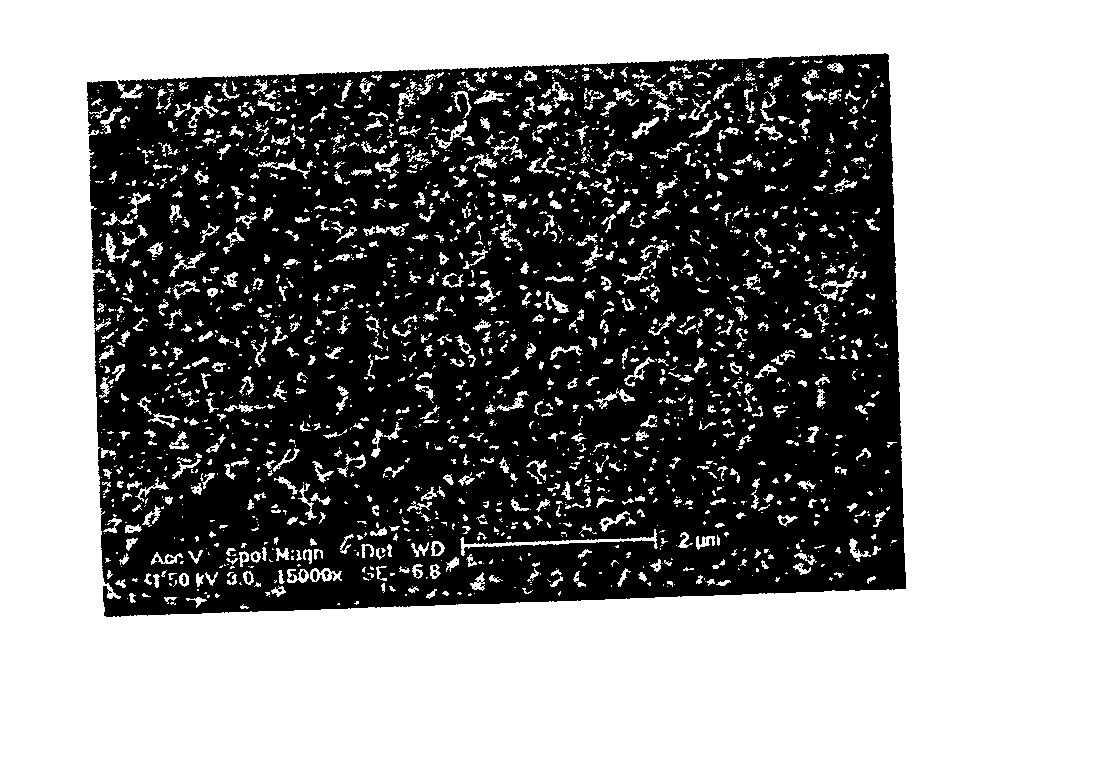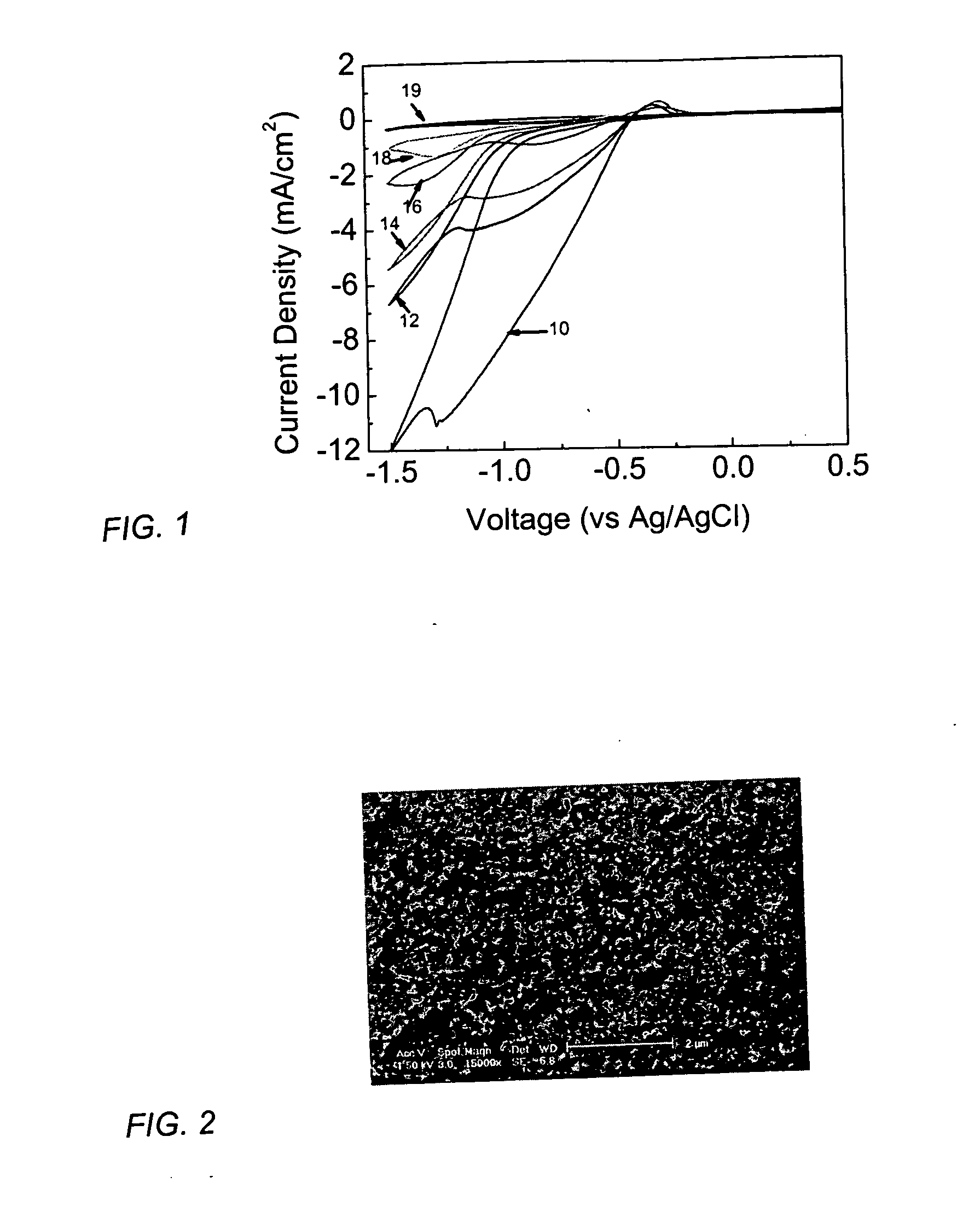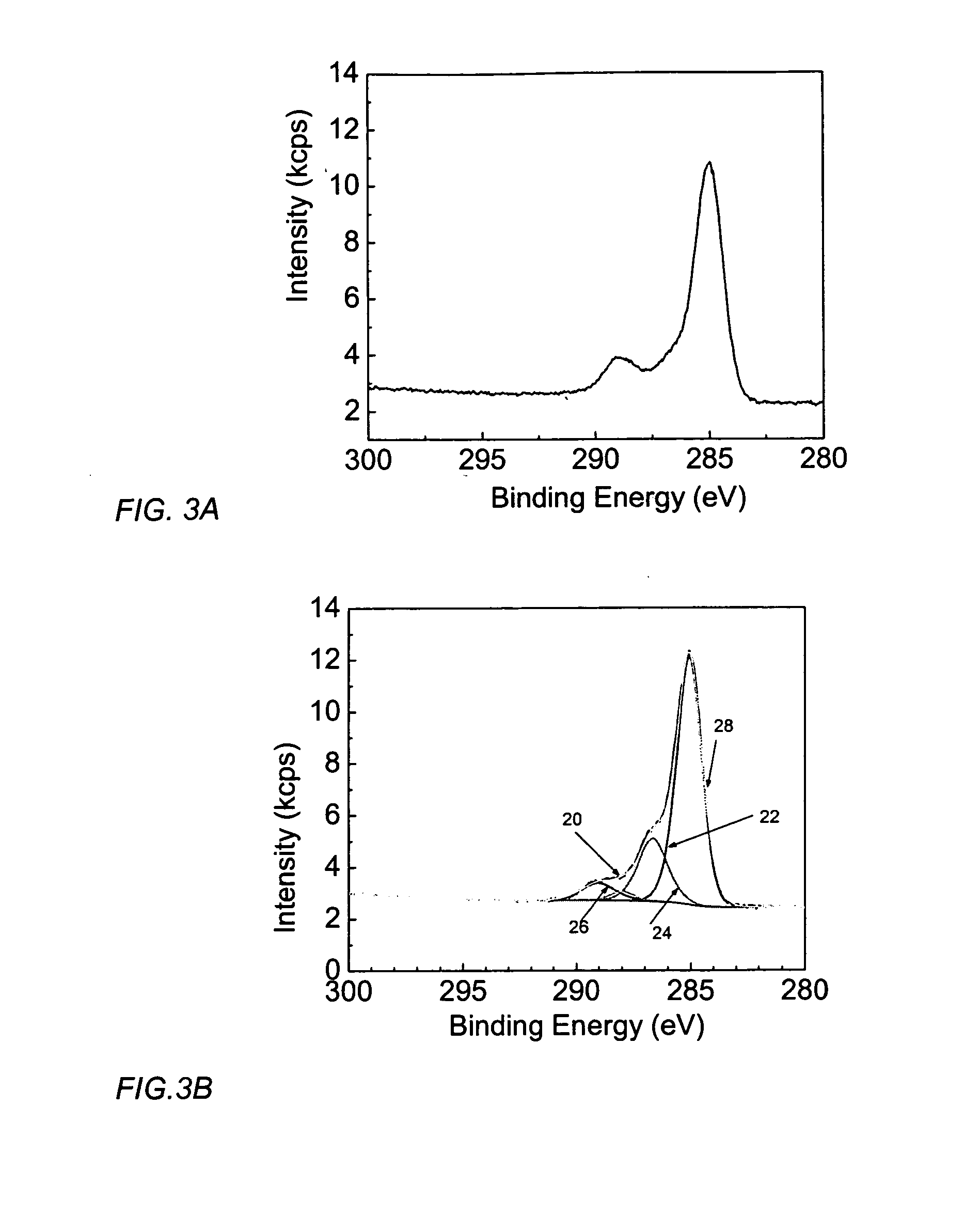Electrodeposition of C60 thin films
- Summary
- Abstract
- Description
- Claims
- Application Information
AI Technical Summary
Benefits of technology
Problems solved by technology
Method used
Image
Examples
example 1
[0039] In this example, a fullerene-containing thin film is electrodeposited onto a conductive substrate from an aqueous solution containing a soluble C60 derivative.
[0040] To electrodeposit the thin film, C60(OH)n, n=2-50, a mixture of C60 molecules polyhydroxylated to various degrees, or a C60-PEG derivative was dissolved in water at a concentration of about 0.1 to 20 mg / ml of water. The pH of the solution was adjusted to obtain optimal film properties. The thin film was electrodeposited by immersing the conductive substrate (working electrode) in the fullerene-containing aqueous solution along with a platinum counter electrode and a Ag / AgCl reference electrode. Other counter electrodes such as graphite or the like are well known in the art and can be used. A potential between the reference electrode and the working electrode of between about −0.5 to −4 V was applied for a time, usually about 30 seconds to 10 hrs, depending on the desired thickness of the thin film. Preferably, t...
example 2
[0043] In this example, a metal and fullerene-containing material is prepared by electrodepositing a fullerene onto a titanium oxide-containing substrate.
[0044] TiO2-coated substrates were prepared by electrodeposition of TiO2 onto a FTO substrate from a 10 mM-1M solution of Ti-ethoxide (pH 0-4), followed by calcination of the coated substrate at about 450° C. for about 4 hours. Alternatively, TiO2-coated substrates were prepared by thermal oxidation of Ti foil. A C60 fullerene-containing thin layer was electrodeposited onto a TiO2-coated substrate from an aqueous solution of C60(OH)n, n=2-50, at about −1 to −4 V vs Ag / AgCl reference electrode for about 5 minutes, as in Example 1. The C60(OH)n, n=2-50, was at a concentration of about 1 mg / ml in water, pH 2-4. FIG. 4 compares the photocurrent of a fullerene-doped titanium dioxide product with that of pure titanium dioxide. The photocurrent of fullerene-doped titanium dioxide 34 and 36 is higher in both the visible and UV region comp...
example 3
[0046] In this example, a metal and fullerene-containing material is prepared by co-electrodeposition of tungsten oxide and a fullerene.
[0047] Thin films of C60 fullerene and WO3 were synthesized on a stainless steel substrate by co-electrodeposition. A 50 mM tungsten-peroxo complex, pH 2, was used as electrolyte and an aqueous solution of C60(OH)n, n=2-50, pH 2-4, was added to the electrolyte at a ratio of about 5-20% of carbon to tungsten. Electrodeposition was carried out at a deposition voltage of about −1.5 V vs Ag / AgCl reference electrode for about 15 minutes. Deposited films were investigated for electrochromic properties. Cation intercalations were carried out in a solution containing Li+. The electrochromic process of metal oxides has been explained by the double intercalation of a proton and an electron to form a colored metal bronze, and the integrated cathodic current density in cyclic voltammograms is a measure of the intercalation capacity.
[0048]FIG. 5 shows cyclic v...
PUM
| Property | Measurement | Unit |
|---|---|---|
| Electrical conductivity | aaaaa | aaaaa |
Abstract
Description
Claims
Application Information
 Login to View More
Login to View More - R&D
- Intellectual Property
- Life Sciences
- Materials
- Tech Scout
- Unparalleled Data Quality
- Higher Quality Content
- 60% Fewer Hallucinations
Browse by: Latest US Patents, China's latest patents, Technical Efficacy Thesaurus, Application Domain, Technology Topic, Popular Technical Reports.
© 2025 PatSnap. All rights reserved.Legal|Privacy policy|Modern Slavery Act Transparency Statement|Sitemap|About US| Contact US: help@patsnap.com



